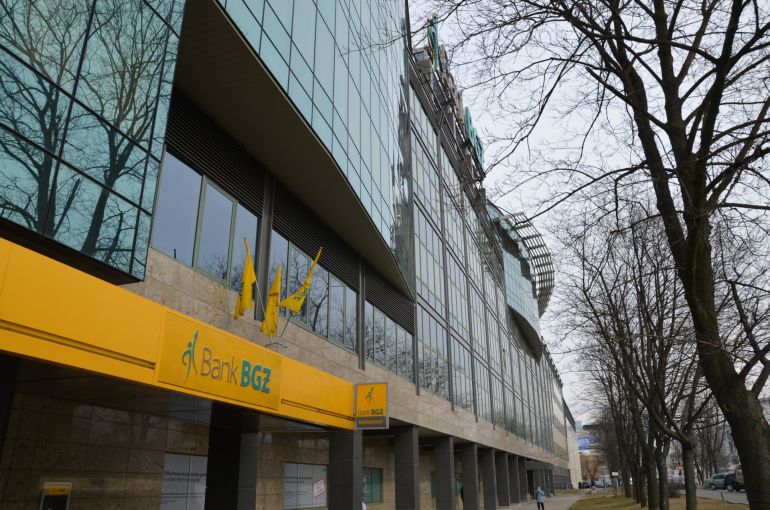Bold and modern
A lot of neglected areas of former factories used to be district’s main flaw and an effective deterrent of investors. Today, however, they are one of the most attractive sites in Warsaw. The infrastructure of Wola gives way to realization of a very bold architectural designs. Still persisting popularity of the capital among the national and foreign developers also favors such attempts. Because tenants are more and more often looking for the office space with lower rent outside the city centre, the investors are responding to this demand by building, among others, in Wola. Next to the revitalized facilities with new features, modern office buildings are springing up there.
The beginning of the high buildings era in the district was marked by the revitalization of Oxford Tower, which at the point of handing over, meaning in the eighties, was the most modern building in Poland. Even now, although it was built as class B, it is a very prestigious building, mainly due to its location and height. Another representative of the older buildings is Warsaw Trade Tower, built in 1997-1999 by the Corean corporation Daewoo. The 43 storey skyscraper was a great constructional and architectural success. Another Wola skyscraper is JM Tower in the corner of Grzybowska and Żelazna street. It was completed in 2011 and apart from 14 000 sqm of office space, it offers also some residential space. It was build on the site where the cellars of Haberbusch and Schiele Brewery were located before the war, and after the war, during PRL period, there were wine cellars.
Warsaw Spire, a complex constructed by Ghelamco company, this year will join the other representatives of high building in Warsaw. It will be distinguished by 49 storey building, top floors of which will reach the height of 180 meters (220 meters including the spires). At the tenants disposal, there will be also two 55-meter high neighbouring office buildings, each of them with 15 storeys. The complex stands out also thanks to the idea of creating some open space between the buildings, dedicated to public use. At the request of the investor, councilors from Warsaw consider naming this area Plac Europejski (the European Square). Last year, in the immediate neighborhood, at Przyokopowa street, opposite the Museum of the Warsaw Uprising, Wola Center complex was officially opened. The project consists of four buildings with office space of 31 000 sqm. Crown Square, completed in 2010, is also located at the same street. Another interesting project in this area is the Phoenix Office Building - Bank BOŚ office built in 2012.
Investors, such as Atlas Estate and Skanska, are planning new projects in Wola. Atlas Estate has already fenced a plot at Grzybowska Street, and at the site of future Skanska investment, at Daszyńskiego roundabout, the demolition of a former IPN building is in the process. Architectural studio JEMS prepares the project of an investment which is going to be constructed there. The details are going to be announced this year. Skanska plans to create a public space within the complex, which will enliven the office building surroundings.
Business and social centre
Wola is a dictrict of contrasts: next to the historical relics, glazed facades of the office buildings emerge. The big advantage of the discussed changes is that more and more investors relate their projects to the past and tradition of this area, and the neglected areas are gradually eliminated. Not without significance is the tendency to include in the new projects the solutions serving the convenience of Warsaw citizens. The examples of this tendency are the initiatives to create the public space around the business complexes, as it is in case of Warsaw Spire or the announced investment at Daszyńskiego roundabout. Thanks to such solutions Wola becomes not only new business centre of Warsaw, but a social centre as well. This is particularly important in the context of the problems faced by the district. A lot of people living here use social assistance – according to statistics, for every thousand inhabitants accrue 34 people receiving benefits. The majority are single retirees or pensioners. A number of unemployed people live on Wola – only Praga Północ is worse in this respect. New investments with service functions and areas dedicated to residents may stop the trend of depopulation of the parts of the district, which in the eyes of the residents hasn’t appeared as a friendly neighbourhood until now.
- 1
- 2





